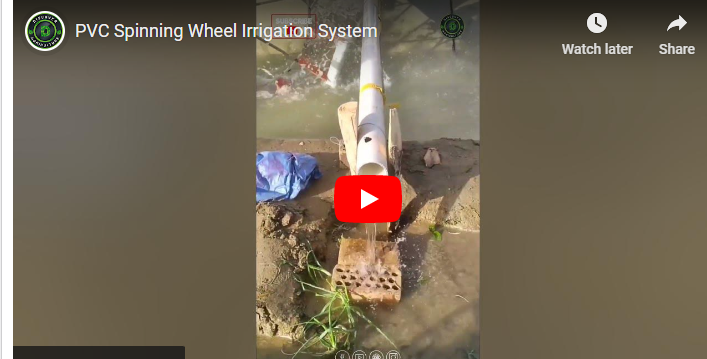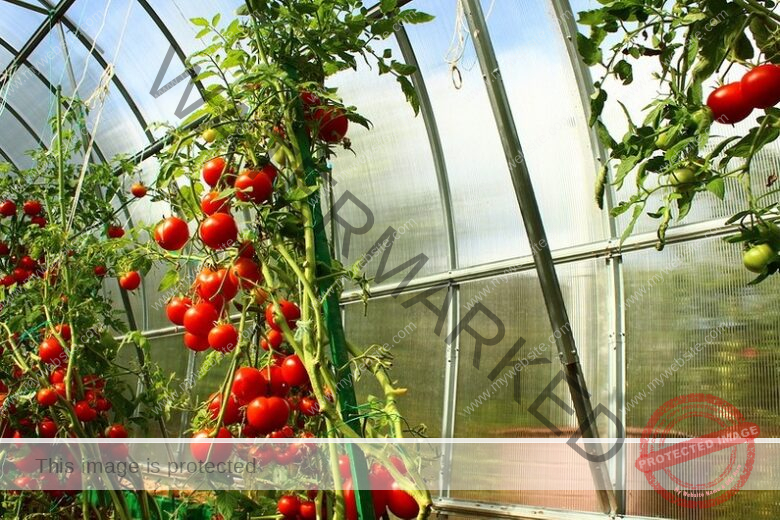The Philippines, an archipelagic nation blessed with fertile lands, has embraced the significance of irrigation systems in bolstering agricultural productivity. A comprehensive list of irrigation systems in the country sheds light on the extensive efforts to harness water resources for agricultural development.
From the vast national irrigation systems managed by the National Irrigation Administration to the communal and private irrigation schemes, each system plays a pivotal role in supporting farmers and ensuring food security.
With a rich diversity of irrigation infrastructure spanning across regions, the list encapsulates the nation’s commitment to sustainable water management, increased crop production, and rural livelihood improvement through effective irrigation practices.
List of Irrigation System in the Philippines
In the Philippines, irrigation schemes play a vital role in agricultural development, ensuring consistent water supply to cultivated lands.
The irrigation system in the country is categorized into three main types: national irrigation systems (NIS), communal irrigation systems (CIS), and private irrigation systems (PIS).
Read Also: List of Irrigation Schemes in Zimbabwe
National irrigation systems (NIS) are large-scale schemes managed by the National Irrigation Administration (NIA).
These systems involve the construction of dams, canals, and reservoirs to supply water to extensive agricultural areas.
NIS projects are often funded and operated by the government, aiming to enhance agricultural productivity, support rural livelihoods, and achieve food security on a national scale.
Read Also: List of Irrigation Schemes in Uganda
Communal irrigation systems (CIS) are community-based initiatives that involve smaller-scale irrigation projects.
These schemes are typically managed collectively by local farmers or irrigation associations.
CIS projects promote local participation, allowing farmers to have a direct role in decision-making and maintenance activities.
They cater to specific communities or clusters of farmers and contribute to improving agricultural yields and socio-economic conditions at the local level.
Read Also: List Of Irrigation Schemes in Tanzania
Private irrigation systems (PIS) are irrigation schemes owned and operated by private entities, including individual farmers, cooperatives, or companies.
These systems are developed using private investments and infrastructure to support agricultural activities on privately owned lands.
PIS projects often focus on specific crops or commercial farming ventures, allowing farmers to have more control over the irrigation process and management of resources.
Read Also: List of Irrigation Schemes in Nigeria
#1. National Irrigation Systems (NIS)
- National Irrigation Administration (NIA) Main Canal
- Upper Pampanga River Integrated Irrigation Systems (UPRIIS)
- Magat River Integrated Irrigation System (MRIIS)
- Angat-Maasim River Irrigation System (AMRIS)
- Agno River Irrigation System (ARIS)
- Cagayan River Integrated Irrigation System (CRIIS)
- Pantabangan-Masiway Complex Irrigation System (PMICIS)
- Tarlac River Irrigation System (TRIS)
- Agus River Irrigation System (ARIS)
- Chico River Irrigation System (CRIS)
- Lower Agno River Irrigation System (LARIS)
- Panay River Irrigation System (PRIS)
- Chico River Pump Irrigation Project (CRPIP)
- Ambuklao Irrigation System (AIS)
- Ibulao Irrigation System (IIS)
- Maguindanao Irrigation System (MIS)
- Magtaon River Irrigation System (MRIS)
- Cataning Irrigation System (CIS)
- Malingao Irrigation System (MIS)
#2. Communal Irrigation Systems (CIS)
- Malabbac Small Irrigation Project (SIP)
- San Jose CIS
- Iloilo CIS
- Negros CIS
- Bulacan CIS
- Davao CIS
- Bohol CIS
- Nueva Ecija CIS
- Laguna CIS
- Capiz CIS
- La Paz CIS
- Aurora CIS
- Quezon CIS
- Ilocos Sur CIS
- Nueva Vizcaya CIS
- Sorsogon CIS
- Leyte CIS
- Zamboanga CIS
- Misamis Oriental CIS
- Agusan del Norte CIS
#3. Private Irrigation Systems (PIS)
- Ilocos Norte PIS
- Isabela PIS
- Pangasinan PIS
- Cagayan PIS
- Tarlac PIS
- Pampanga PIS
- Batangas PIS
- Iloilo PIS
- Davao PIS
- Palawan PIS
- Cebu PIS
- Antique PIS
- Zamboanga del Sur PIS
- Surigao del Norte PIS
- Albay PIS
- Ilocos Norte PIS
- Negros Occidental PIS
- South Cotabato PIS
- Lanao del Sur PIS
- Bukidnon PIS
Please note that this is not an exhaustive list, and there may be additional irrigation schemes under each category in the Philippines.
Types Of Irrigation Systems in The Philippines
The Philippines employs various types of irrigation systems to support agricultural production across the country.
Here are some of the commonly used types of irrigation systems in the Philippines:
Read Also: List of Irrigation Schemes in Kenya
#1. Surface Irrigation
This type of irrigation involves the direct application of water to the soil surface. It can be further classified into furrow irrigation, where water is distributed through small channels along the field, and border irrigation, where water is applied through larger borders or strips.
#2. Sprinkler Irrigation
Sprinkler irrigation utilizes overhead sprinklers to distribute water over the fields. It is suitable for different soil types and crops and can be particularly effective in areas with uneven terrain or limited water resources.
#3. Drip Irrigation
Drip irrigation involves the slow, targeted application of water directly to the plant’s root zone.
It minimizes water loss through evaporation or runoff and is highly efficient in water usage. Drip irrigation is often used for high-value crops and in areas with water scarcity.
#4. Subsurface Irrigation
Subsurface irrigation systems deliver water directly to the root zone of plants through buried pipes or tubes.
It reduces water loss and evaporation, minimizes weed growth, and prevents soil erosion.
This method is suitable for crops with shallow root systems and areas with high salinity or waterlogging issues.
#5. Sprinkler-Subsurface Irrigation Hybrid
This hybrid system combines sprinkler irrigation with subsurface irrigation techniques.
It involves a combination of above-ground sprinklers and buried pipes to deliver water both on the soil surface and directly to the root zone.
This system optimizes water usage and helps maintain a balanced moisture level in the soil.
#6. Rainwater Harvesting
The process of rainwater harvesting entails the collection and subsequent storage of rainwater for future utilization in irrigation activities.
It typically utilizes rooftop catchment systems, storage tanks, and filtration mechanisms to capture and store rainwater during the wet season, ensuring its availability during dry periods.
#7. Traditional or Manual Irrigation
In some areas, traditional or manual irrigation methods are still practiced, such as using buckets, basins, or bamboo pipes to transport and distribute water manually.
These methods are often employed in small-scale farming or in remote areas with limited infrastructure.
Sources of Water for Irrigation in The Philippines
In the Philippines, various sources of water are utilized for irrigation purposes to support agricultural activities.
Here are some of the primary sources of water for irrigation in the country:
#1. Rivers and Streams
Rivers and streams serve as significant sources of water for irrigation. Water is extracted from these water bodies using intake structures and is then distributed through canals or pipelines to the fields for irrigation.
Rivers such as the Cagayan River, Pampanga River, Agno River, and many others play a crucial role in supplying water for irrigation in their respective regions.
#2. Reservoirs and Dams
Reservoirs and dams are constructed to store water from rivers and streams during the wet season.
These structures help regulate the flow of water and provide a reliable supply for irrigation throughout the year.
Major reservoirs and dams in the Philippines, such as the Angat Dam, Magat Dam, Pantabangan Dam, and Ambuklao Dam, serve as important water sources for irrigation projects.
#3. Groundwater
Groundwater, accessed through wells and tubewells, is another vital source of water for irrigation in the Philippines.
Deep wells are drilled into aquifers, which are underground layers of water-bearing rock or soil.
Groundwater extraction is particularly crucial in areas where surface water sources may be limited or unreliable.
However, it is important to manage groundwater resources sustainably to prevent depletion and maintain long-term viability.
#4. Rainwater Harvesting
Rainwater harvesting is an important supplementary source of water for irrigation.
It involves collecting and storing rainwater during the wet season for later use in irrigation during drier periods.
Rainwater is typically captured from rooftops and channeled into storage tanks or reservoirs.
This method is especially useful for small-scale irrigation systems and areas with irregular rainfall patterns.
#5. Springs and Natural Wells
Springs and natural wells that emerge from the ground provide water for irrigation in certain regions of the Philippines.
These sources of water often have a consistent flow and can be tapped for agricultural purposes.
#6. Water Reuse and Recycling
In some cases, treated wastewater from urban areas or agricultural runoff is utilized for irrigation.
By treating and reusing water, the Philippines promotes sustainable water management practices and minimizes water waste.
Importance Of Irrigation Schemes in The Philippines
- Increased Agricultural Productivity: Irrigation schemes are of paramount importance in the Philippines as they significantly enhance agricultural productivity. By providing a reliable and sufficient water supply to crops, irrigation schemes support increased yields and contribute to food security.
- Water Management and Conservation: Irrigation schemes play a crucial role in managing and conserving water resources. They enable the efficient distribution and controlled application of water, minimizing wastage and ensuring optimal utilization of this vital resource.
- Diversification of Crops: Irrigation schemes facilitate the cultivation of a wide range of crops throughout the year. By providing a continuous water supply, farmers can diversify their agricultural activities and cultivate high-value crops, leading to economic growth and improved livelihoods.
- Mitigation of Climate Variability: Irrigation schemes help mitigate the impact of climate variability, such as irregular rainfall patterns and droughts. They provide a stable water supply to counteract water shortages during dry spells, allowing farmers to sustain agricultural production even in challenging weather conditions.
- Poverty Alleviation and Rural Development: Irrigation schemes contribute to poverty alleviation and rural development by creating employment opportunities in the agricultural sector. Access to irrigation improves farmers’ incomes, reduces rural-urban migration, and stimulates economic activities in rural areas.
Benefits of Irrigation Schemes in The Philippines
- Enhanced Crop Quality and Quantity: Irrigation schemes ensure consistent moisture levels in the soil, promoting better crop growth, development, and overall crop quality. With adequate water supply, farmers can increase the quantity and quality of their produce, leading to higher market value and profitability.
- Increased Crop Diversity: Irrigation schemes enable farmers to cultivate a diverse range of crops, including high-value cash crops and crops with different water requirements. This diversification enhances farmers’ income potential, reduces vulnerability to market fluctuations, and contributes to a more resilient agricultural sector.
- Extended Growing Seasons: By providing a stable water supply, irrigation schemes extend the growing seasons beyond natural rainfall patterns. This allows for multiple cropping cycles in a year, maximizing land utilization and optimizing agricultural productivity.
- Reduced Dependency on Rainfall: The use of irrigation schemes reduces reliance on erratic rainfall patterns, which can be unreliable and insufficient. Farmers are less susceptible to the impacts of droughts and other climate-related challenges, ensuring a more consistent and reliable agricultural production.
- Improved Water Use Efficiency: Irrigation schemes promote efficient water use through technologies like drip irrigation and sprinkler systems. These systems minimize water loss through evaporation and runoff, optimizing water usage and reducing the strain on water resources.
- Food Security and Self-Sufficiency: With increased agricultural productivity and diversified crop production, irrigation schemes contribute to food security and self-sufficiency. The availability of irrigation water ensures a steady supply of food, reduces dependence on imported goods, and strengthens the resilience of the national food system.
Impact Of Irrigation Schemes in The Philippines
- Improved Agricultural Productivity: Irrigation schemes have led to increased agricultural productivity by providing water to crops, resulting in higher crop yields and quality.
- Poverty Reduction: Irrigation schemes have contributed to poverty reduction in rural areas by providing farmers with a reliable source of water, allowing them to increase their income by increasing crop yields and production.
- Environmental Sustainability: Irrigation schemes can promote sustainable land use by reducing soil erosion, promoting soil conservation, and improving land productivity.
- Economic Growth: Irrigation schemes can drive economic growth by increasing agricultural productivity and providing farmers with a reliable source of income.
Limitations facing Irrigation Schemes in The Philippines
- Water Scarcity: Water scarcity is a major limitation facing irrigation schemes in the Philippines, especially during the dry season. Consequently, this can result in diminished crop yields and heightened competition for water resources.
- Poor Infrastructure: Inadequate infrastructure, such as inadequate irrigation systems, can limit the effectiveness of irrigation schemes.
- Lack of Funding: Insufficient funding is a significant constraint to the development and maintenance of irrigation schemes in the Philippines.
- Land Tenure Issues: Land tenure issues, including unclear land ownership and conflicts between landowners and tenants, can hinder the development and implementation of irrigation schemes.
- Climate Change: Climate change can impact the availability of water resources and affect the effectiveness of irrigation schemes, making it challenging to maintain consistent water supply for irrigation.
Irrigation System in the Philippines PDF
The Irrigation System in the Philippines PDF provides comprehensive information and documentation about the country’s irrigation infrastructure, policies, and management.
It serves as a valuable resource for researchers, policymakers, and stakeholders in the agriculture sector.
Problems in Irrigation System in the Philippines
The irrigation system in the Philippines faces several challenges, including water scarcity, inadequate infrastructure, funding constraints, land tenure issues, and the impact of climate change.
Addressing these problems is crucial for improving the efficiency and effectiveness of irrigation systems and ensuring sustainable agricultural development.
Private Irrigation System in the Philippines
Private irrigation systems in the Philippines are owned and operated by individuals, organizations, or companies.
These systems play a significant role in supporting agricultural activities, particularly in areas where public irrigation infrastructure is limited.
Private irrigation schemes contribute to increased crop productivity and provide employment opportunities for local communities.
Irrigation Projects in the Philippines
Numerous irrigation projects have been implemented across the Philippines to expand and improve irrigation infrastructure.
These projects aim to increase agricultural productivity, enhance water management, and promote sustainable farming practices.
Examples include the National Irrigation Program, Small Irrigation Projects, and the Farm-to-Market Road and Irrigation Development Project.
10 Different Irrigation Systems in the Philippines
The Philippines utilizes various irrigation systems to meet the diverse needs of its agricultural sector.
Some commonly used systems include surface irrigation (such as furrow and border irrigation), sprinkler irrigation, drip irrigation, subsurface irrigation, rainwater harvesting, traditional or manual irrigation methods, and hybrid systems that combine different techniques.
Communal Irrigation System in the Philippines
Communal irrigation systems in the Philippines involve the collective management and utilization of irrigation facilities by a group of farmers or a community.
These systems promote cooperation and equitable water distribution among farmers, enhancing agricultural productivity and fostering social cohesion within rural communities.
Status of Irrigation System in the Philippines
The status of the irrigation system in the Philippines encompasses the current condition, coverage, and performance of irrigation infrastructure.
Efforts are underway to improve the status of irrigation systems, including rehabilitation and modernization initiatives, expansion of coverage, and the adoption of efficient water management practices.
Irrigation System in the Philippines Thesis
An irrigation system in the Philippines thesis would delve into a specific research study, examining various aspects of irrigation infrastructure, management, or policies.
It would contribute to the existing body of knowledge and provide insights for enhancing irrigation systems’ effectiveness and sustainability in the country.
Conclusion
The Philippines has implemented various irrigation systems to enhance agricultural productivity and support sustainable development. These systems range from traditional methods such as flood irrigation to modern techniques like drip and sprinkler irrigation. By investing in efficient irrigation systems, the Philippines aims to optimize water resources and ensure food security for its population.




